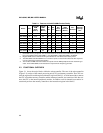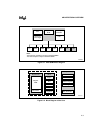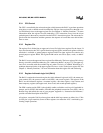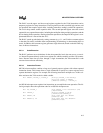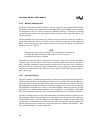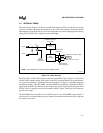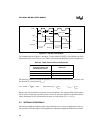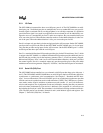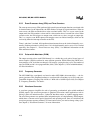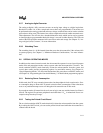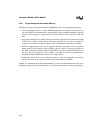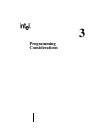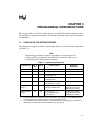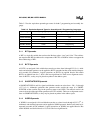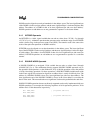
8XC196MC, MD, MH USER’S MANUAL
2-10
2.5.3 Event Processor Array (EPA) and Timer/Counters
The event processor array (EPA) performs high-speed input and output functions associated with
its timer/counters. In the input mode, the EPA monitors an input for signal transitions. When an
event occurs, the EPA records the timer value associated with it. This is a capture event. In the
output mode, the EPA monitors a timer until its value matches that of a stored time value. When
a match occurs, the EPA triggers an output event, which can set, clear, or toggle an output pin.
This is a compare event. Both capture and compare events can initiate interrupts, which can be
serviced by either the interrupt controller or the PTS.
Timer 1 and timer 2 are both 16-bit up/down timer/counters that can be clocked internally or ex-
ternally. Each timer/counter is called a timer if it is clocked internally and a counter if it is clocked
externally. See Chapter 11, “Event Processor Array (EPA),” for additional information on the
EPA and timer/counters.
2.5.4 Pulse-width Modulator (PWM)
The output waveform from each PWM channel is a variable duty-cycle pulse. Several types of
motors require a PWM waveform for most efficient operation. When filtered, the PWM wave-
form produces a DC level that can change in 256 steps by varying the duty cycle. The number of
steps per PWM period is also programmable (8 bits). See Chapter 10, “Pulse-width Modulator,”
for more information.
2.5.5 Frequency Generator
The 8XC196MD has a peripheral not found on other 8XC196Mx microcontrollers — the fre-
quency generator. This peripheral produces a waveform with a fixed duty cycle (50%) and a pro-
grammable frequency (ranging from 4 kHz to 1 MHz with a 16 MHz input clock). See Chapter
8, “Frequency Generator,” for details.
2.5.6 Waveform Generator
A waveform generator simplifies the task of generating synchronized, pulse-width modulated
(PWM) outputs. This waveform generator is optimized for motion control applications such as
driving 3-phase AC induction motors, 3-phase DC brushless motors, or 4-phase stepping motors.
The waveform generator can produce three independent pairs of complementary PWM outputs,
which share a common carrier period, dead time, and operating mode. Once it is initialized, the
waveform generator operates without CPU intervention unless you need to change a duty cycle.
See Chapter 9, “Waveform Generator,” for more information.



